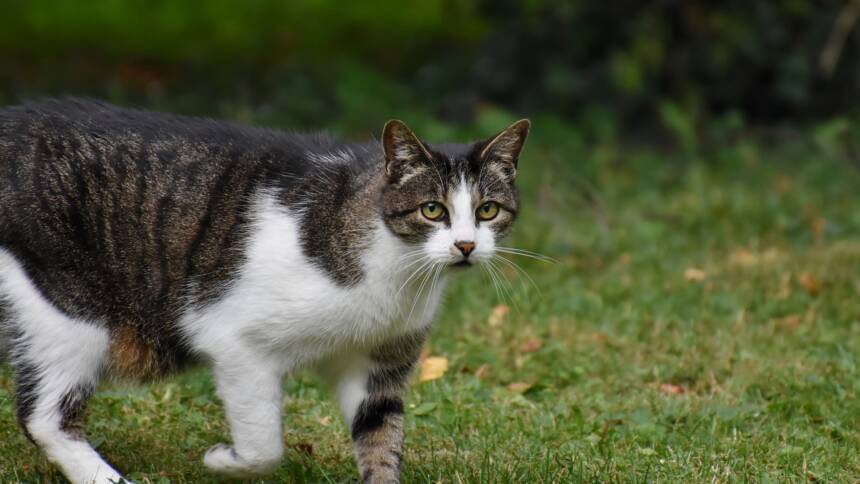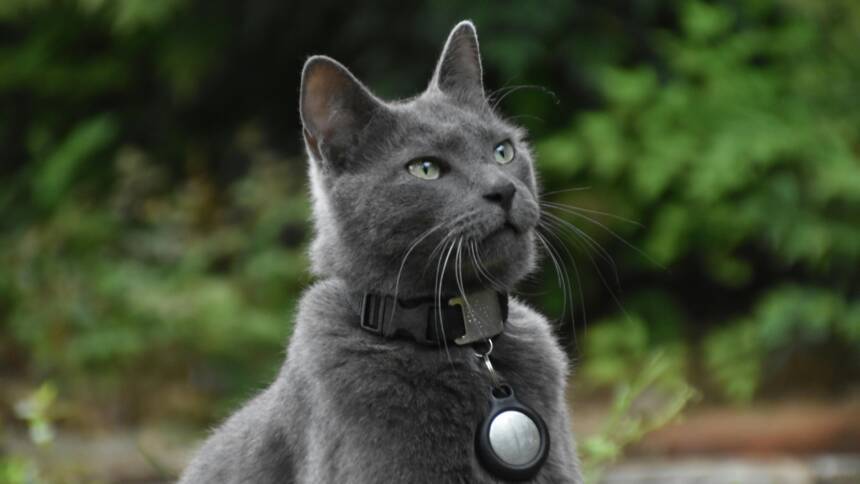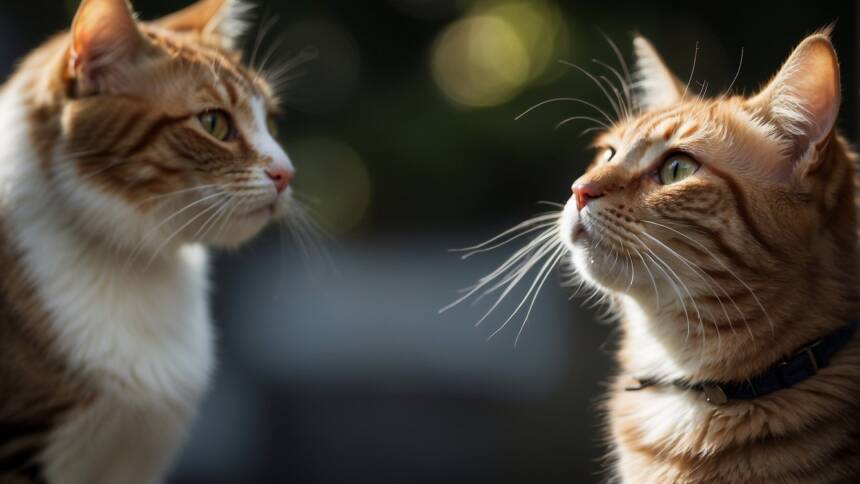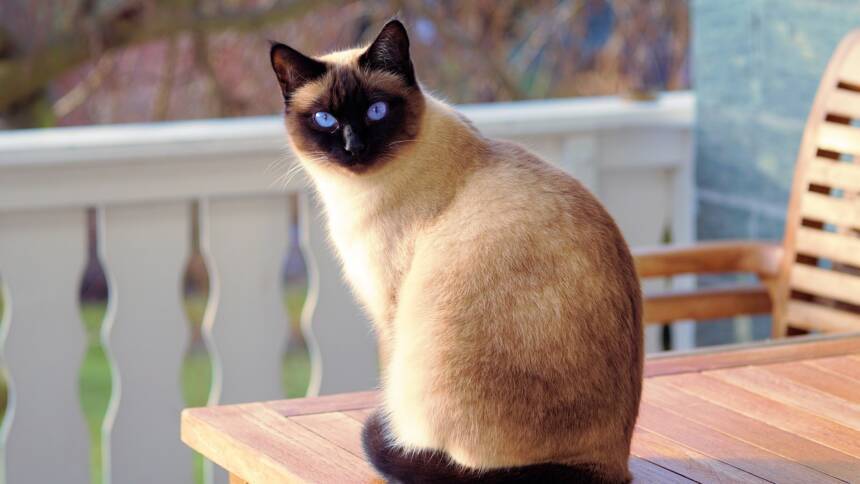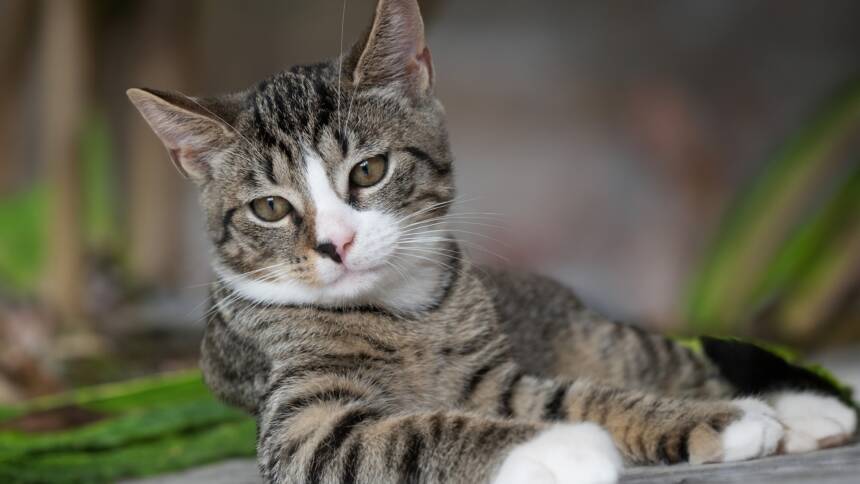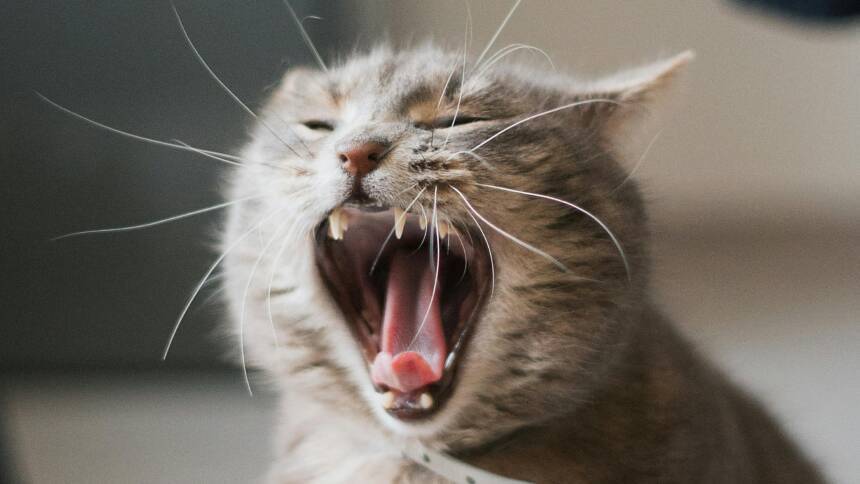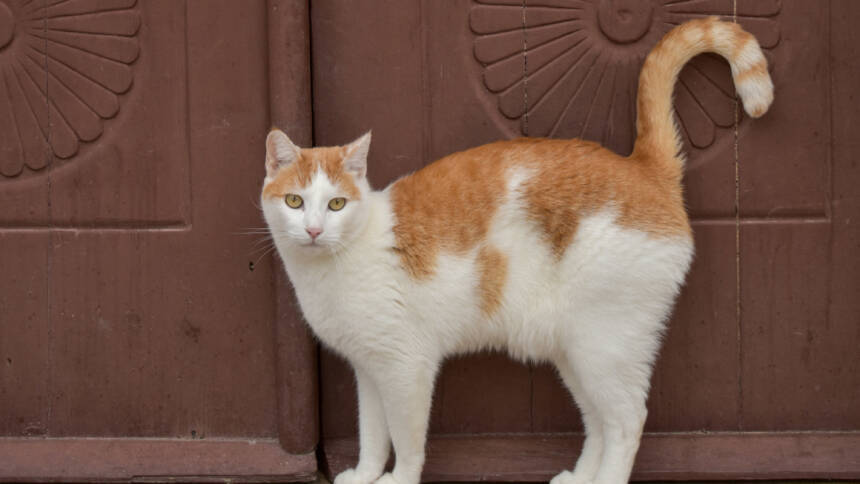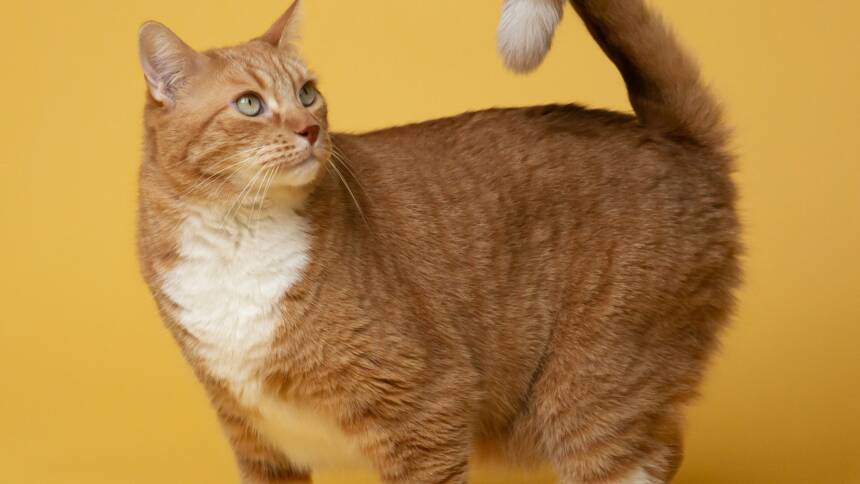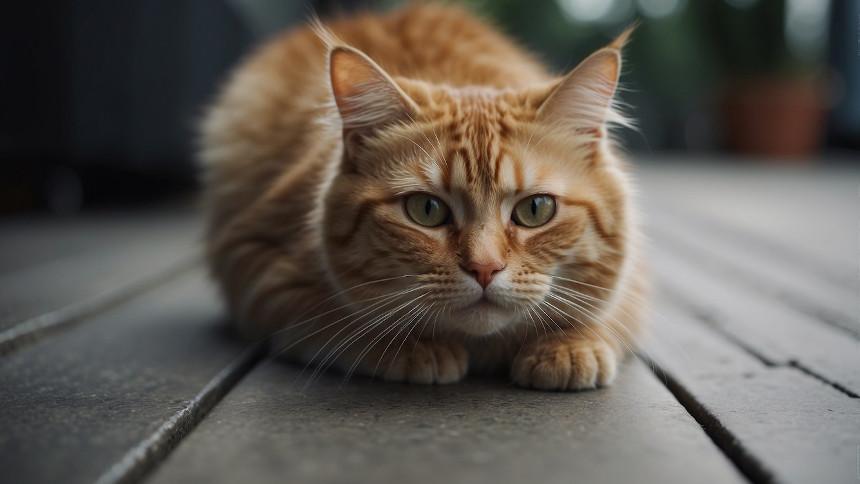Understanding the reproductive behavior of domestic cats includes recognizing the signs and frequency of estrus, commonly known as being ‘in heat’. Female cats, or queens, reach sexual maturity and can begin to experience estrus cycles, which are periods of fertility and increased mating behaviors. These cycles typically occur when the cat is around six months old but can vary depending on breed and individual development.
Cats are seasonally polyestrous, which means they can go into heat several times during a breeding season when the days are longer, usually from the early spring to the fall. The frequency of these heat periods can be as often as every two to three weeks, making it possible for a cat to go into heat multiple times within a given season. During these times, a cat may exhibit certain behaviors such as increased vocalization, affectionate displays and possibly a small amount of mucus-like discharge, as they do not typically bleed during estrus.
Managing a cat in heat requires patience and understanding, especially for owners who do not intend to breed their pet. It’s crucial to be aware of the period’s length, which can last from several days to a few weeks if the cat does not mate. Recognizing these patterns can help owners provide appropriate care and consider options such as spaying to prevent unwanted litters and mitigate the behaviors associated with the heat cycle.
Understanding the Feline Heat Cycle
In the life of a reproductive-age female cat, understanding the heat cycle is crucial for proper care and management. The feline estrous cycle, more commonly known as the heat cycle, encompasses various stages, each with distinct characteristics and behaviors related to reproduction.
What Is Estrus?
Estrus, commonly referred to as “being in heat,” is the phase in the cat’s reproductive cycle during which she is actively receptive to mating. During this period, behavioral changes may be observed, such as increased vocalization, restlessness, and affectionate behavior, as the cat attempts to attract potential mates.
Stages of the Feline Estrous Cycle
The feline estrous cycle consists of several stages, starting with proestrus, which lasts 1-2 days and is characterized by initial signs of affectionate behavior without receptive mating behavior. Following proestrus is estrus, where the cat is receptive to mating and may exhibit pronounced behavioral changes for a duration of 7-10 days if mating does not occur.
The cycle then progresses to metestrus or diestrus, a phase that occurs if the cat has ovulated, which can last several days to a couple of weeks. If no ovulation has taken place, this phase is often indistinguishable and is followed by anestrus, a period of sexual and hormonal inactivity lasting several months until the next cycle begins.
- Proestrus: 1-2 days, initial signs of affection without mating receptivity.
- Estrus: 7-10 days, cat is receptive to mating.
- Metestrus/Diestrus: Lasts up to two weeks, post-ovulation phase.
- Anestrus: Several months of inactivity before cycle repeats.
Heat Cycle Frequency
Cats are polyestrous by nature, cycling through heat multiple times within a year and capable of doing so at a frequency of 2-3 weeks during breeding seasons. Most fall under the category of seasonally polyestrous, meaning their cycle is influenced by seasons, peaking during warmer months. Typically, the breeding season runs from early spring to late fall. Cats can start experiencing estrous cycles as early as four months old, with most reaching reproductive maturity and beginning regular cycles by six months of age. They are also known as induced ovulators, requiring the physical stimulus of mating to trigger ovulation.
Identifying Signs of Heat in Cats
When female cats reach reproductive maturity, they experience a series of behavioral and physical changes known as estrus or being “in heat.” Recognizing these signs is crucial for responsible cat care and breeding practices.
Physical Signs
Estrus Position: When a cat is in heat, she may adopt a mating position: crouched on the front legs, with the hindquarters raised and tail to one side. This stance is a response to petting or pressure on the back and indicates receptivity to mating.
Vulvar Swelling: There may be some swelling of the vulva, but this can be subtle and not as prominent as in some other animals.
Behavioral Changes
Vocalizing: Cats in heat can become more vocal than usual. This vocalization often involves loud and persistent meowing, which may sound distressing to humans, but it’s a natural way of alerting potential mates.
Affectionate Behavior: A cat in heat may display increased affection towards humans and other animals. They often exhibit behaviors such as rubbing against people or furniture and might appear more clingy and attention-seeking.
Rolling: Cats in heat frequently engage in rolling on the ground. This behavior is thought to spread their scent and signal their availability to males.
Marking with Pheromones: Female cats may spray urine to mark their territory with pheromones, signaling their reproductive status to male cats. Unlike regular urination, this type of spraying involves backing up to a vertical surface and may be accompanied by a quivering tail.
The Biological Implications of Heat
The heat cycle in cats, medically known as the estrous cycle, is a significant physiological process that facilitates reproduction and determines the fertility periods in female cats, or queens.
Reproduction and Mating
In the context of reproduction, a queen will typically enter her first heat cycle between 6 months to a year old, signalling her ability to mate and produce offspring. This cycle occurs every three weeks during the breeding season. When a female cat is in heat, she becomes particularly receptive to mating. A successful mating can trigger ovulation, as the physical act stimulates the release of eggs from the ovaries. Fertilized eggs subsequently implant in the uterine wall, leading to pregnancy and a subsequent litter of kittens.
Hormonal Influences
Hormones play a critical role in governing the heat cycle of a cat. Estrogen levels rise, causing cats to exhibit behaviors indicative of being in heat, such as increased vocalization and affectionate behavior. If mating occurs and the eggs are fertilized, the hormone progesterone begins to prepare the uterus for pregnancy. Should ovulation occur without fertilization, the body resets hormonally, leading to another heat cycle until mating is successful or the breeding season ends. During periods of low light, such as winter, cats may experience anestrus—a temporary cessation of the estrous cycle.
Managing a Cat in Heat
When managing a cat in heat, it’s important to focus on providing comfort and modifying the environment to reduce stress and unwanted behaviors such as excessive vocalization.
Comforting Strategies
Interactive Play: Engage the cat in interactive play sessions to distract her from the urge to seek a mate. Utilize toys that simulate hunting behavior, providing a healthy outlet for her energy.
Enhanced Petting and Attention: Increase the amount of petting and attention you give to your cat. Gentle strokes along her back, avoiding the lower back and tail which may stimulate mating behaviors, can help to calm her.
Pheromone Diffusers: Consider using pheromone diffusers or sprays in the home. These products can mimic the calming pheromones naturally produced by cats, helping to ease the queen’s stress levels.
Environmental Modifications
Safe Outdoor Access: If possible, creating a secure outdoor enclosure, such as a catio, allows your cat to experience the outdoor environment safely without the risk of escaping or encountering male cats.
Temperature Control: Keep the home comfortably cool, as warmth can sometimes exacerbate a cat’s restlessness during her heat cycle.
Calm Spaces: Ensure your cat has access to a quiet, calm space away from noisy areas to retreat to when feeling overwhelmed. Soft bedding and familiar scents can provide additional comfort.
By implementing these comforting strategies and environmental modifications, owners can help their cats navigate the challenges of being in heat with less stress for both the pet and the household.
The Importance of Spaying and Neutering
The decision to spay or neuter a cat can have significant beneficial impacts on their health and behavior. It helps in reducing the risk of certain diseases and can lead to more stable behavior.
Health Benefits
Spaying, the surgical procedure to remove a female cat’s reproductive organs, and neutering, the equivalent for males, can drastically improve a cat’s quality of life. For female cats, or queens, spaying helps prevent uterine infections such as pyometra and significantly reduces the risk of mammary cancer. For male cats, or tomcats, neutering prevents testicular cancer and certain prostate problems.
- Mammary Cancer: Spayed females have a 40-60% lower risk of developing mammary tumors.
- Pyometra: This serious uterine infection is often fatal if not treated promptly. Spaying eliminates the risk of pyometra since it involves the removal of the uterus.
Behavioral Impact
The process of spaying and neutering also resolves many of the behavioral issues associated with the natural mating instincts in cats. In spayed females, the absence of heat cycles means behaviors such as vocalization and restlessness are minimized. In male cats, neutering often reduces aggression and the compulsion to spray urine for marking territory.
- Territorial Marking: Male cats are less likely to spray strong-smelling urine indoors and outdoors after being neutered.
- Roaming: Both spayed and neutered cats are less inclined to roam, decreasing the risk of accidents or fights with other animals.
Navigating Cat Breeding and Pregnancy
When a cat reaches sexual maturity, typically between six to nine months, she enters heat cycles that permit breeding and subsequent pregnancy. Understanding the process and care involved is vital for the health of the queen and her future litter.
Breeding Responsibilities
- Selecting a Mate:
- A queen (female cat) should be healthy and of proper breeding age before being introduced to a male.
- Consider genetic health, temperament, and breed specifics.
- Understanding the Breeding Season:
- Cats have several heat cycles during the breeding season, which can range from January to November, depending on the climate.
- Heat cycles last about a week and occur every 2-3 weeks during this period.
- Identifying Heat Signs:
- Look for behavioral changes such as increased vocalization and affectionate behavior.
- Physical signs are subtle, but the queen may present a lordosis posture, with a raised hindquarters.
Pregnancy Care
- Confirming Pregnancy:
- Pregnancy can be confirmed by a veterinarian roughly 15-18 days after mating, by palpating for embryonic vesicles.
- Ultrasound may detect a pregnancy around 3 weeks, with heartbeats visible by the fourth week.
- Monitoring Health:
- Ensure that the pregnant queen receives a balanced diet for gestation and lactation.
- Routine veterinary check-ups are crucial to monitor the health of the queen and the developing embryos.
- Preparing for Birth:
- A gestation period lasts typically 63-65 days.
- Prepare a quiet and comfortable nesting area for the queen to give birth to her litter of kittens.
- Post-Birth Care:
- The queen usually manages the birthing process herself.
- Observe for complications and consult a veterinarian if there are concerns, such as prolonged labor or distress.
Understanding Age-Related Heat Cycles
Female cats experience changes in their heat cycles that correlate with their age, directly impacting the frequency and behavior associated with these cycles. Recognizing the age-related patterns in a cat’s reproductive cycle is essential for responsible cat care.
Kittens to Adults
At the onset of sexual maturity, typically around six months of age, female kittens enter their first estrus cycle. The timing can vary somewhat due to factors such as breed and environmental conditions. A minority of cats may start their heat cycles as early as four months, while others may not begin until they turn one year old.
During this transition into adulthood, female cats may experience more frequent heat cycles, often lasting one to two weeks. It’s important for cat owners to be aware that a female cat can become pregnant during her first heat cycle if she mates.
Senior Cats
As female cats age and become senior, often considered to be around seven years old or more, there is a noticeable change in their estrus cycles. While it is a common misconception that senior cats do not go into heat, the truth is their cycles may become less frequent or less intense.
A senior cat’s reproductive system will slow down over time, but a decrease in sexual hormones does not equate to a cessation of heat cycles. Regular veterinary check-ups are crucial to managing the health of a senior cat, particularly if she has not been spayed, as the risk for reproductive system disorders increases with age.
Seasonal Effects on Heat Cycles
The reproductive cycles of cats are significantly influenced by seasonal changes, particularly in the Northern Hemisphere. Varying light levels throughout the year affect the frequency and timing of a cat’s heat cycles.
Northern Hemisphere Trends
In the Northern Hemisphere, cats typically experience cyclical heat patterns correlated with the length of daylight hours. Indoor cats with exposure to artificial light may experience less pronounced seasonal effects but still tend to follow the natural rhythms to some degree. During the shorter days of fall and winter, felines commonly enter a period of anestrus, where they are not in heat. As days lengthen from February to October, heat cycles resume and can occur every 2-3 weeks if the cat does not become pregnant.
Indoor Versus Outdoor Cats
Indoor cats may be exposed to consistent artificial light, which can lead to more frequent cycles that can seem to occur year-round. On the other hand, outdoor cats are more attuned to natural daylight cycles, and thus, their estrus periods are more likely to match traditional seasonal patterns. However, the use of a catio can allow indoor cats safe access to outdoor environments, enabling them to experience natural light patterns and potentially regulating their heat cycles.
